The IDF Force You Shouldn’t Passover
By Mitch Reed
When we got the preview copy of the Oil War book from I was very interested in the possibility of playing a small IDF force so I can get the Pereh anti-tank platoon on the table, This unit has the ability to shoot anything on the table without needing line of site and uses a new special rule called NLOS.
Besides trying to get this unit on the table I also wondered what this model would look like, since it is a missile shooting platform that was disguised as a tank. The Pereh was in use secretly for over 25 years and was finally declassified in 2015 before being pulled from service in 2017.
My first attempt to make a small IDF force from Oil War used a small formation of Magach 6 tanks backed up by the Pereh platoon, so when I was sent these boxes to review I was excited to get the chance to try this force out on a table as bring you my review of these two new releases.
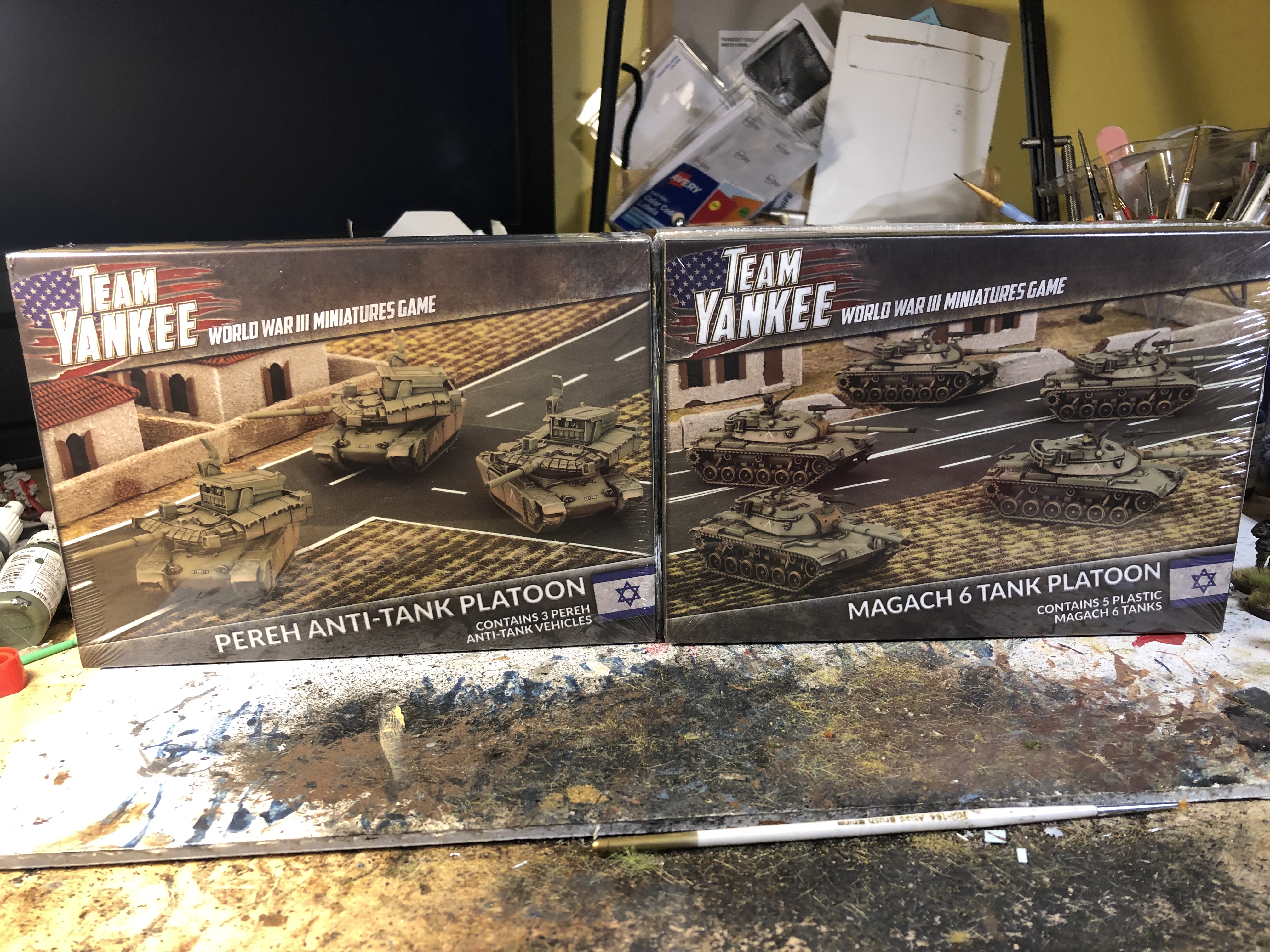
The Magach 6 box comes with five tank sprues just enough to make a formation of a HQ and two 2-tank platoons. The Pereh comes with three resin models, all you will ever need since a force can only have one platoon of three vehicles.

Let’s look at the Pereh first. Like I said its three resin models. The Pereh is one of the coolest looking models Battlefront ever produced and is just one neat model you just have to get into your collection.

 Not a lot of parts here so they were very easy to build.
Not a lot of parts here so they were very easy to build.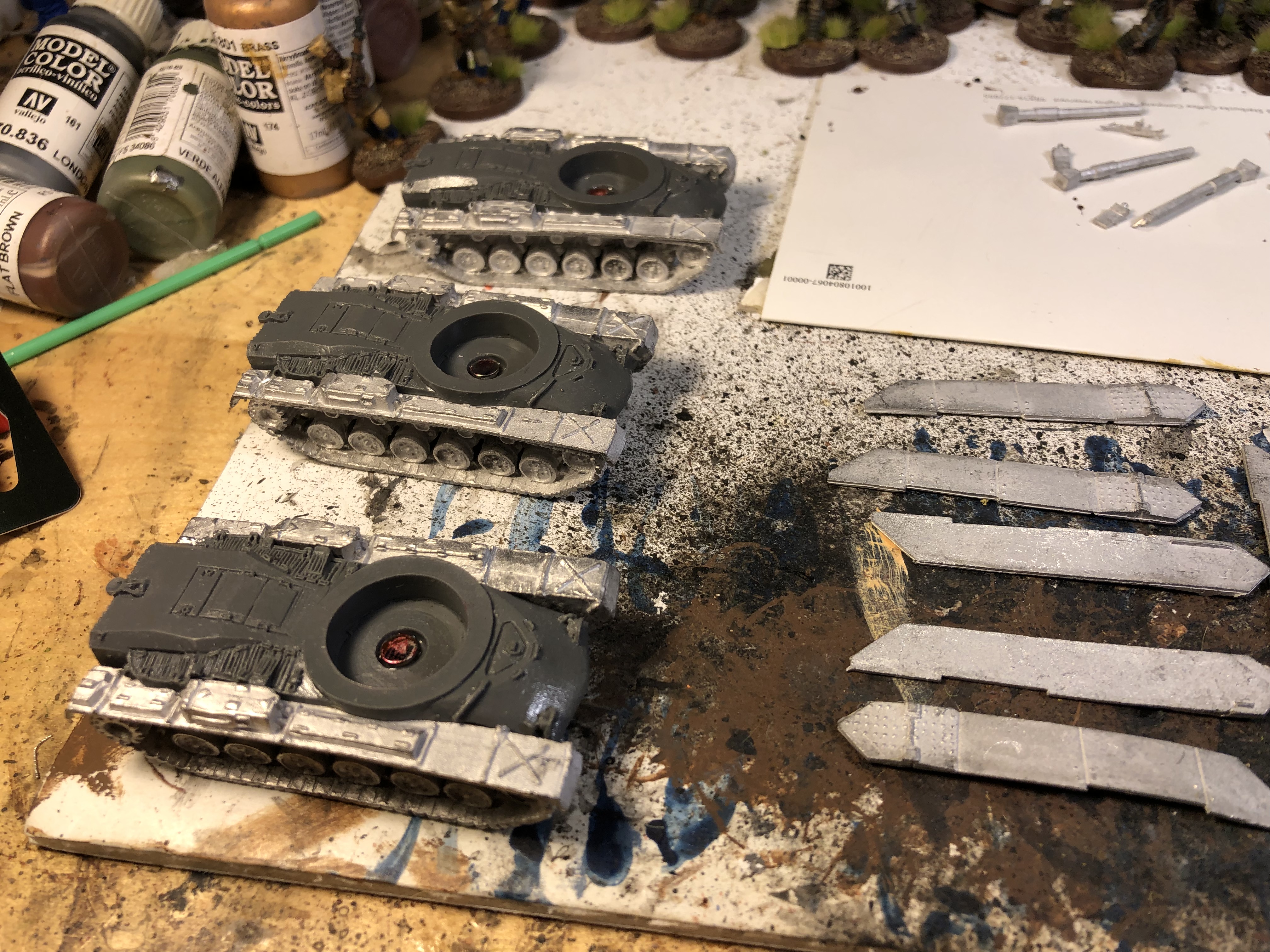

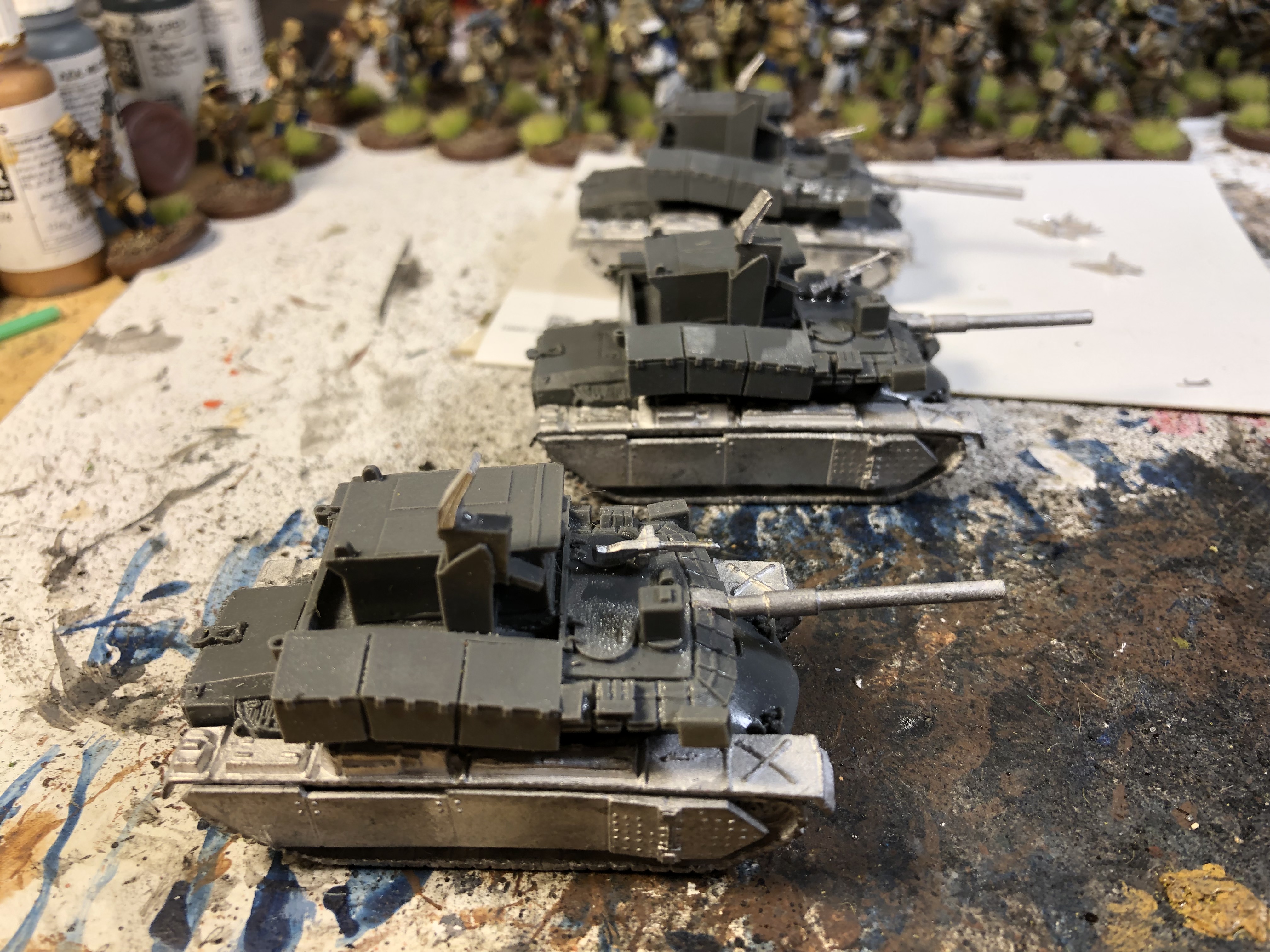
The set comes with a card and three extra HMGs, which is good since those things break off all the time, and sorry no decals or commanders for this kit.


Having never seen the older M-60 models I cannot tell if these are any different. The sprue does, however, have the parts to make the US Army version. The models were easy to build and I am voting the .50-cal HMG and .30-cal LMG as the new easiest parts to break off your model.

Since I’m the worst painter on the NDNG staff, my painting tips are easy enough to follow and replicate on your own workbench. I gave these guys a base coat of Rust-oleum Army Green primer which is the perfect color for them.
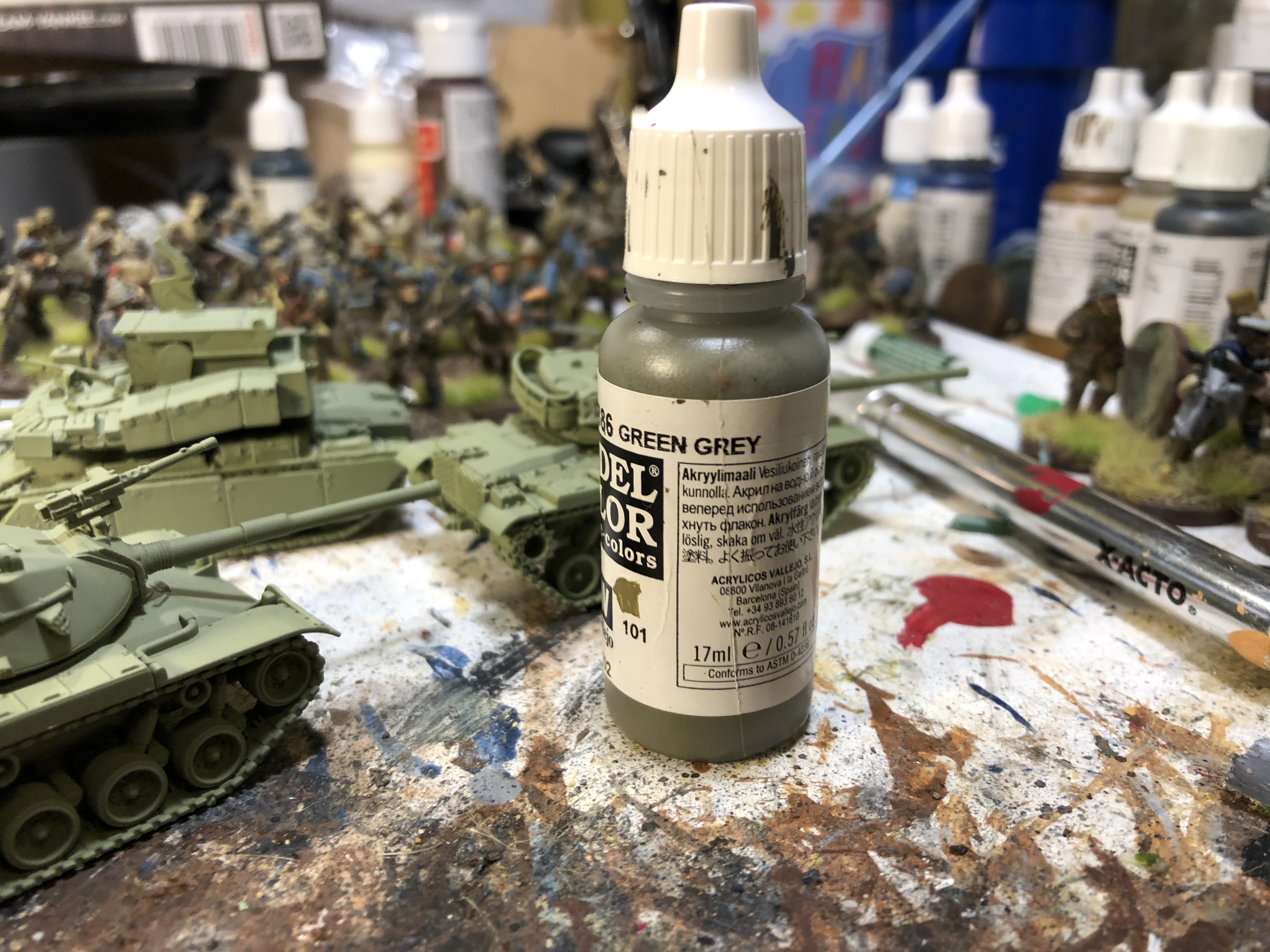 Now lets add a coat of watered down Green-Grey which is what is recommended in the book.
Now lets add a coat of watered down Green-Grey which is what is recommended in the book. 
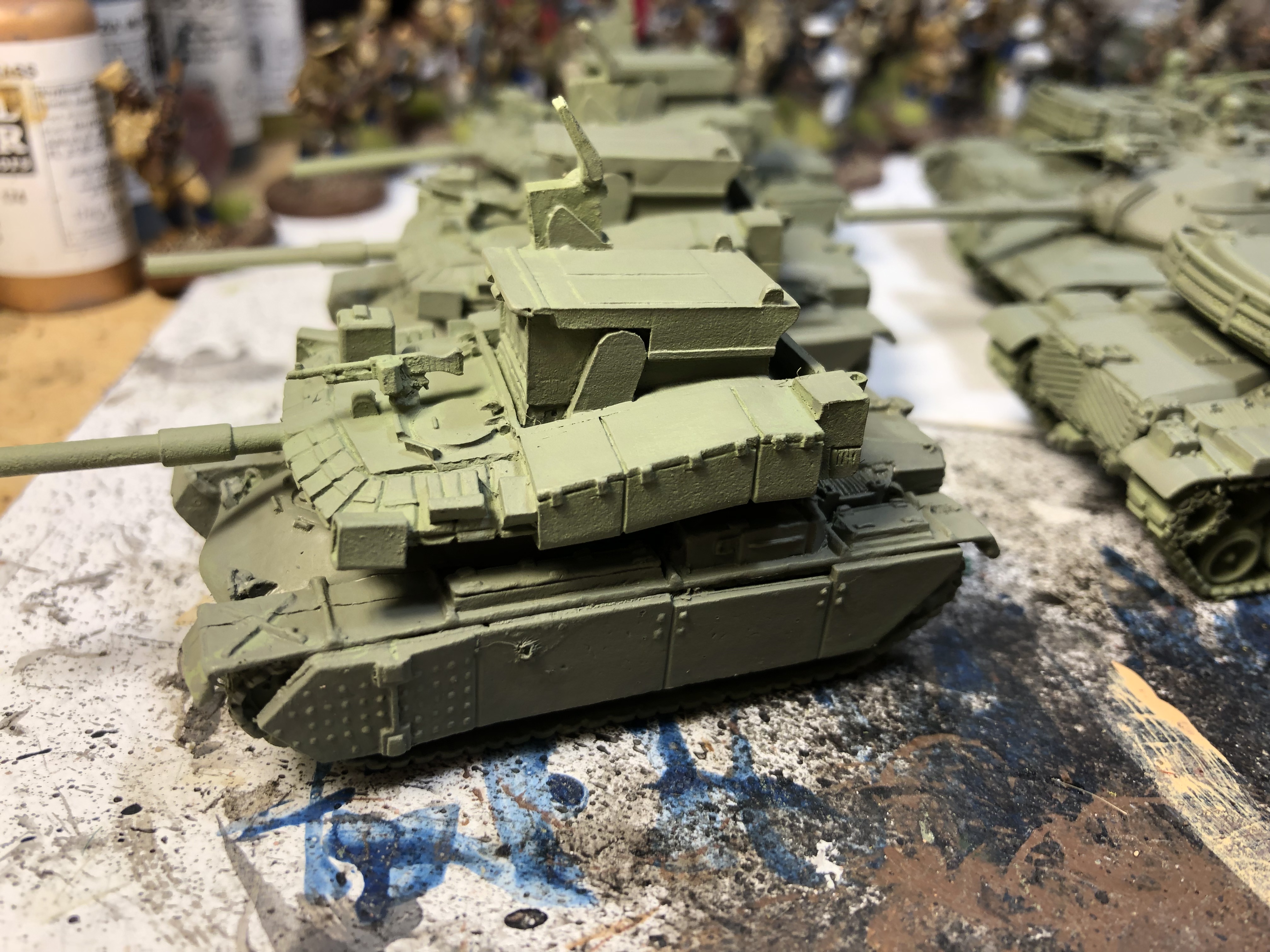
As you can tell the Grey-Green does not change the overall color of the model that much,
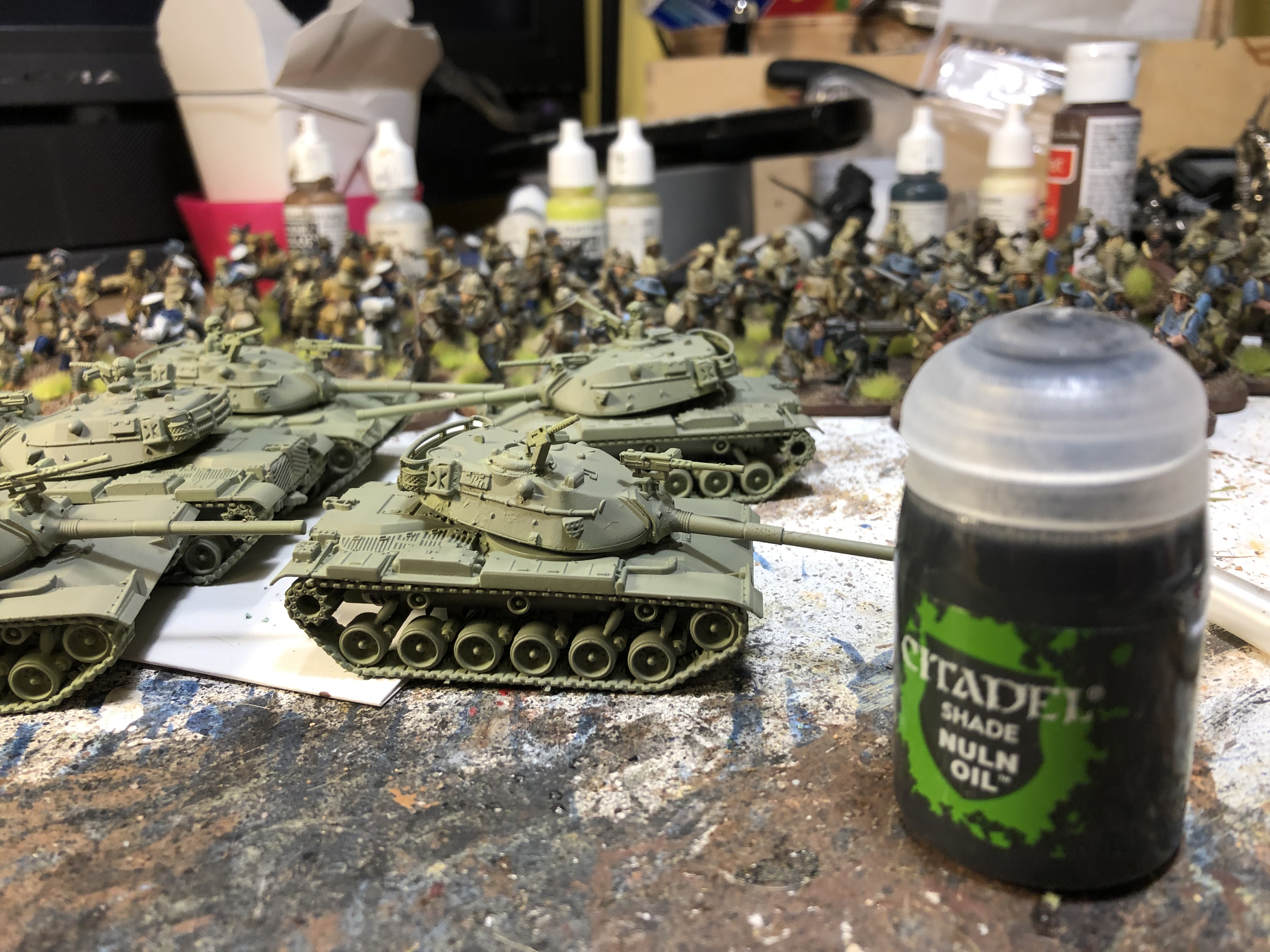
Now let’s do a wash, I love using Nuln Oil.

After the Nuln Oil dries I took a old brush (shown above) and put some German Feldgray on the model, This adds come high light to the model and lightens up areas where a lot of the Nulin Oil had built up and created dark spots. I used the brush to “rub” the paint into areas of the model.

Next step is to dry brush the models using some Dark Sand. The color really brings out the detail of the model and helps put some desert dust color on it.

I really liked how these models were coming out. So fat the overall color looks really good, just the right shade.

Now let’s do those treads in Flat Earth.
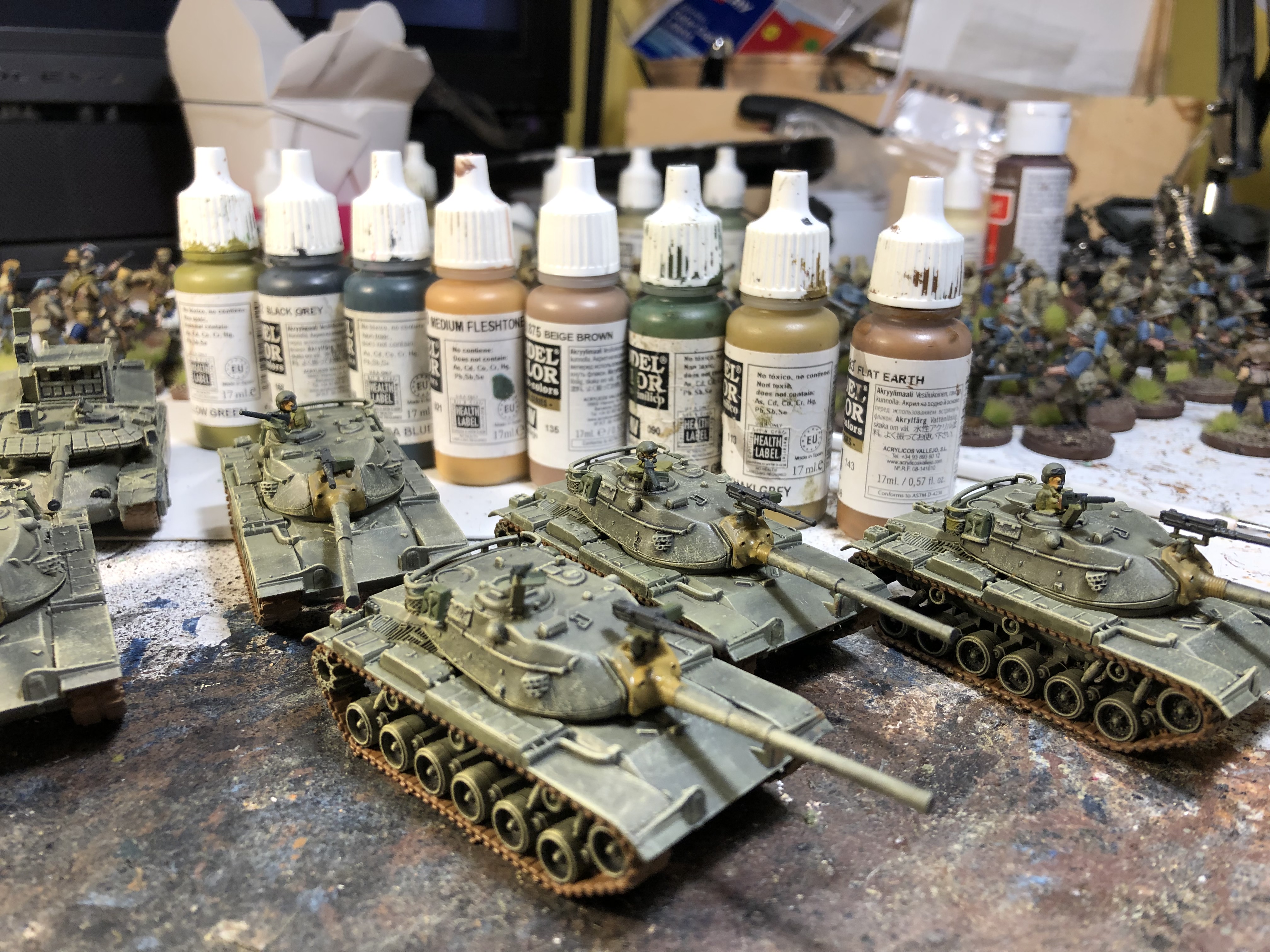
Now for the detail work. I didn the .50-cal in Black Grey and the .30-cal in Dark Sea Blue Grey, a new color I like using for darker gunmetal. The commanders uniform was done in Yellow Green and Khaki Grey for the area by the gun mantlet. The other colors shown are used for wood and flesh on the model.
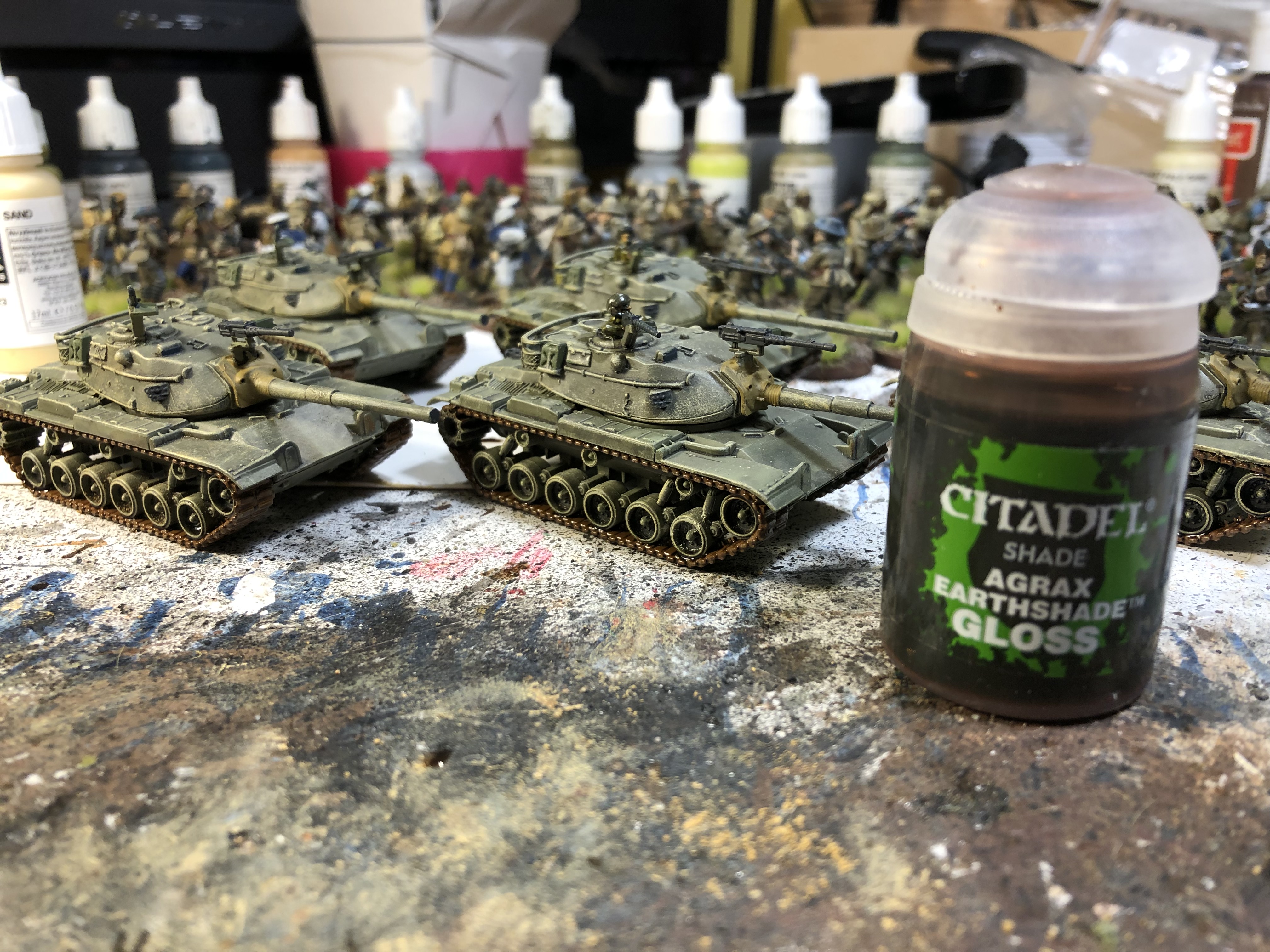
After some more detailing I hit the commanders and treads with some Agrax Earthshade.
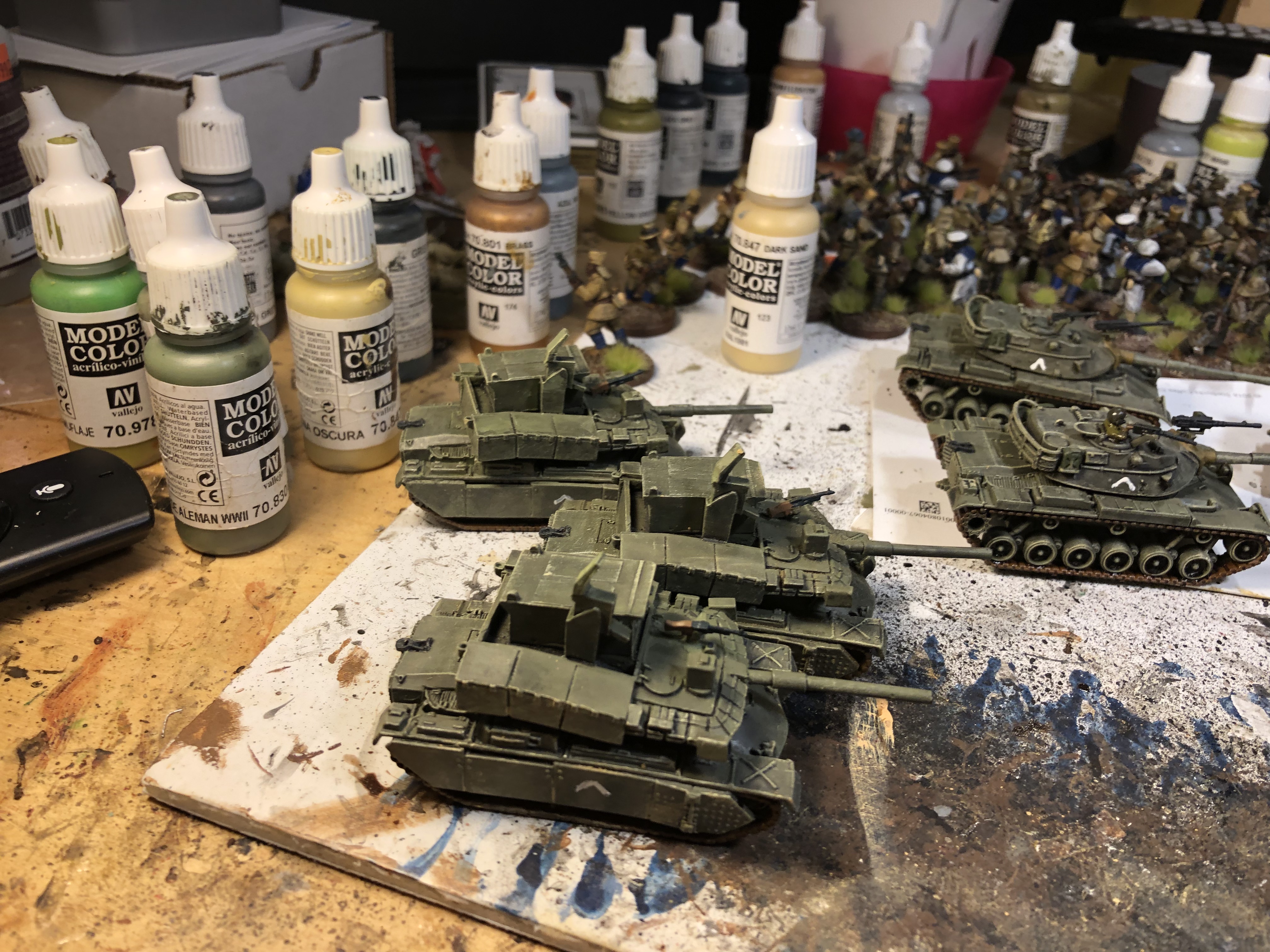
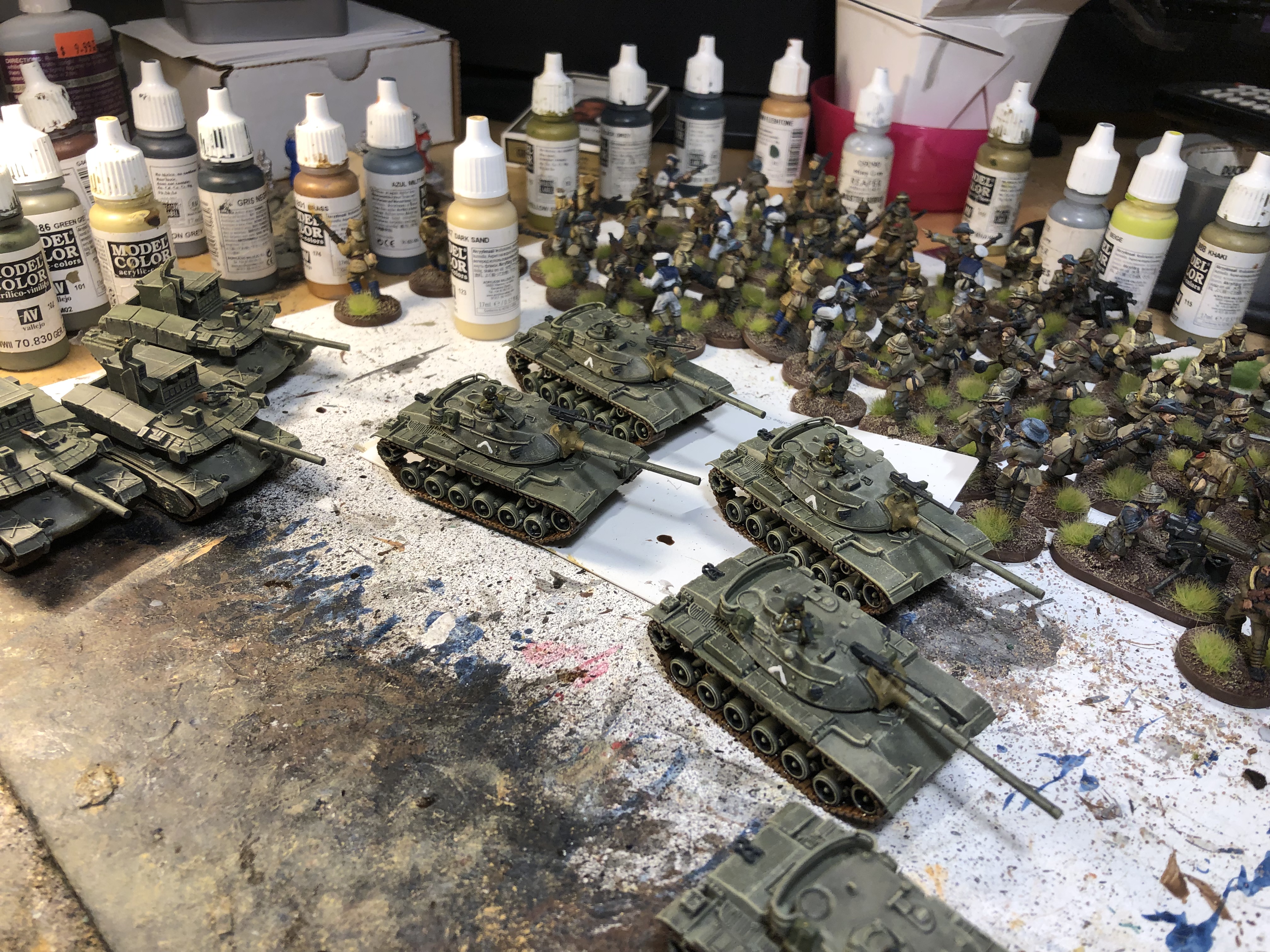
I added some Pigment but the model didn’t really need it. I decided to add the hash marks by hand rather than use the decals.
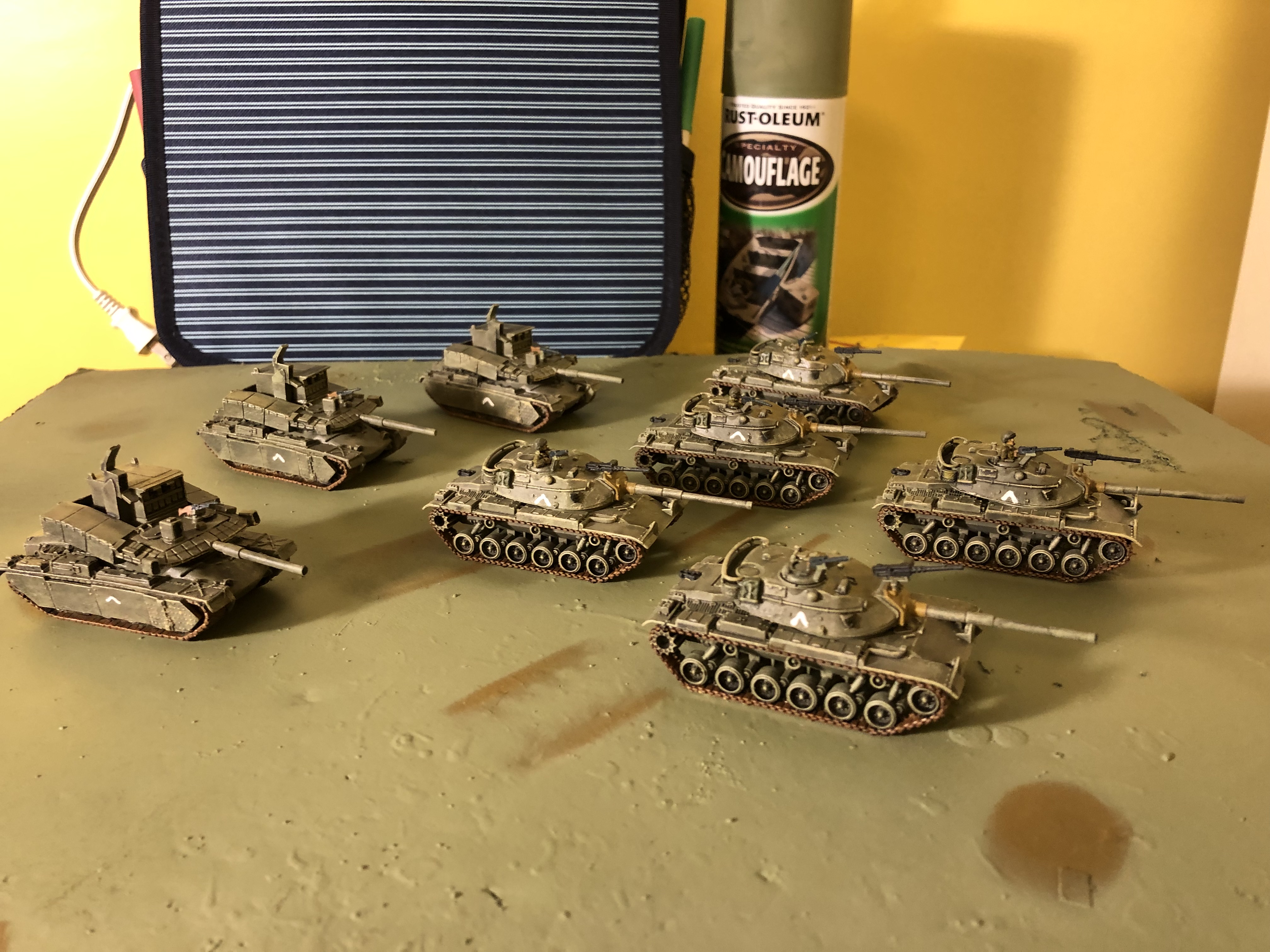
I really liked the way these models came out. I had them done within 24-hours of the boxes arriving at my house.
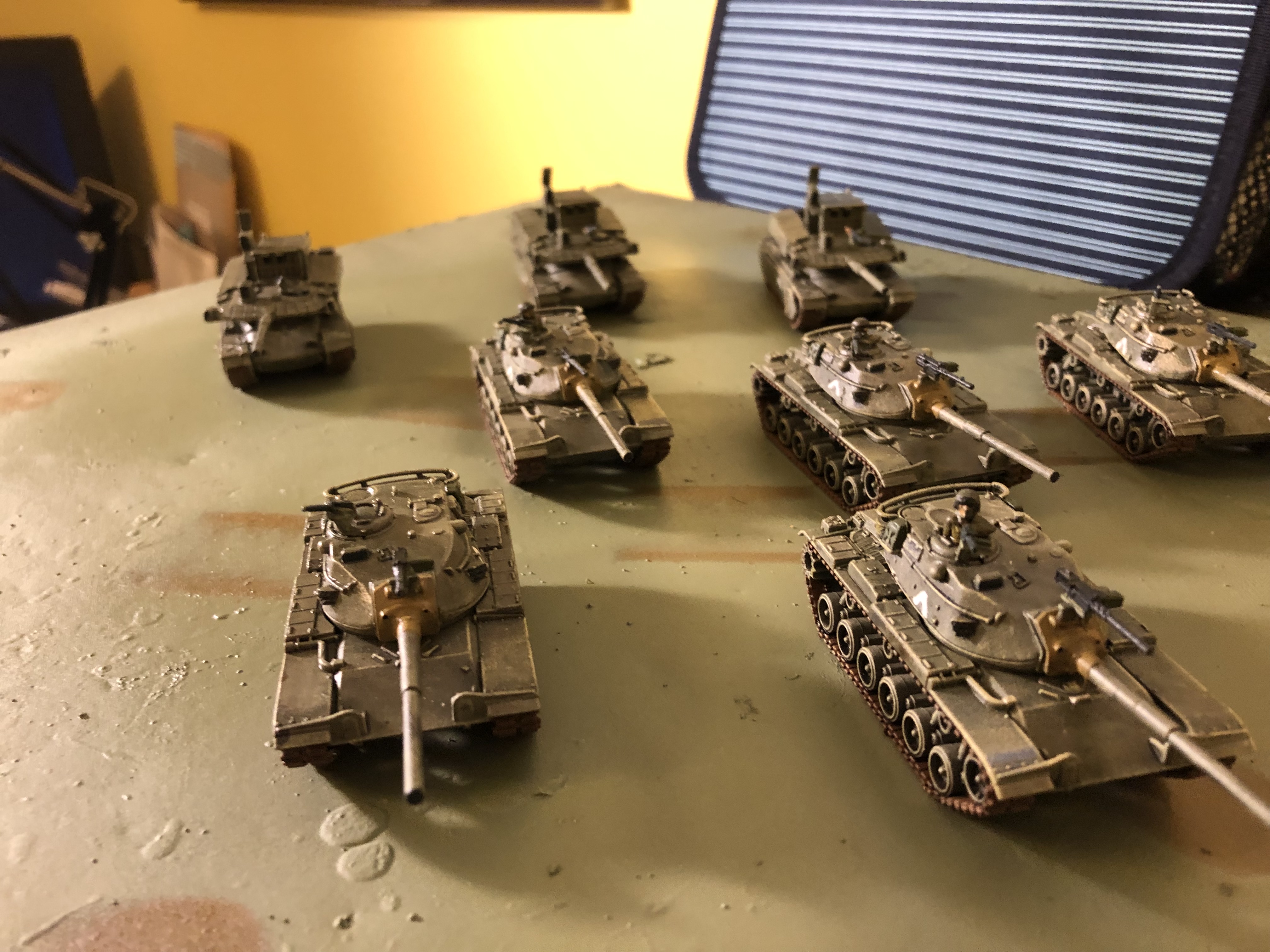
I added a spray of Dullcote and let them dry.
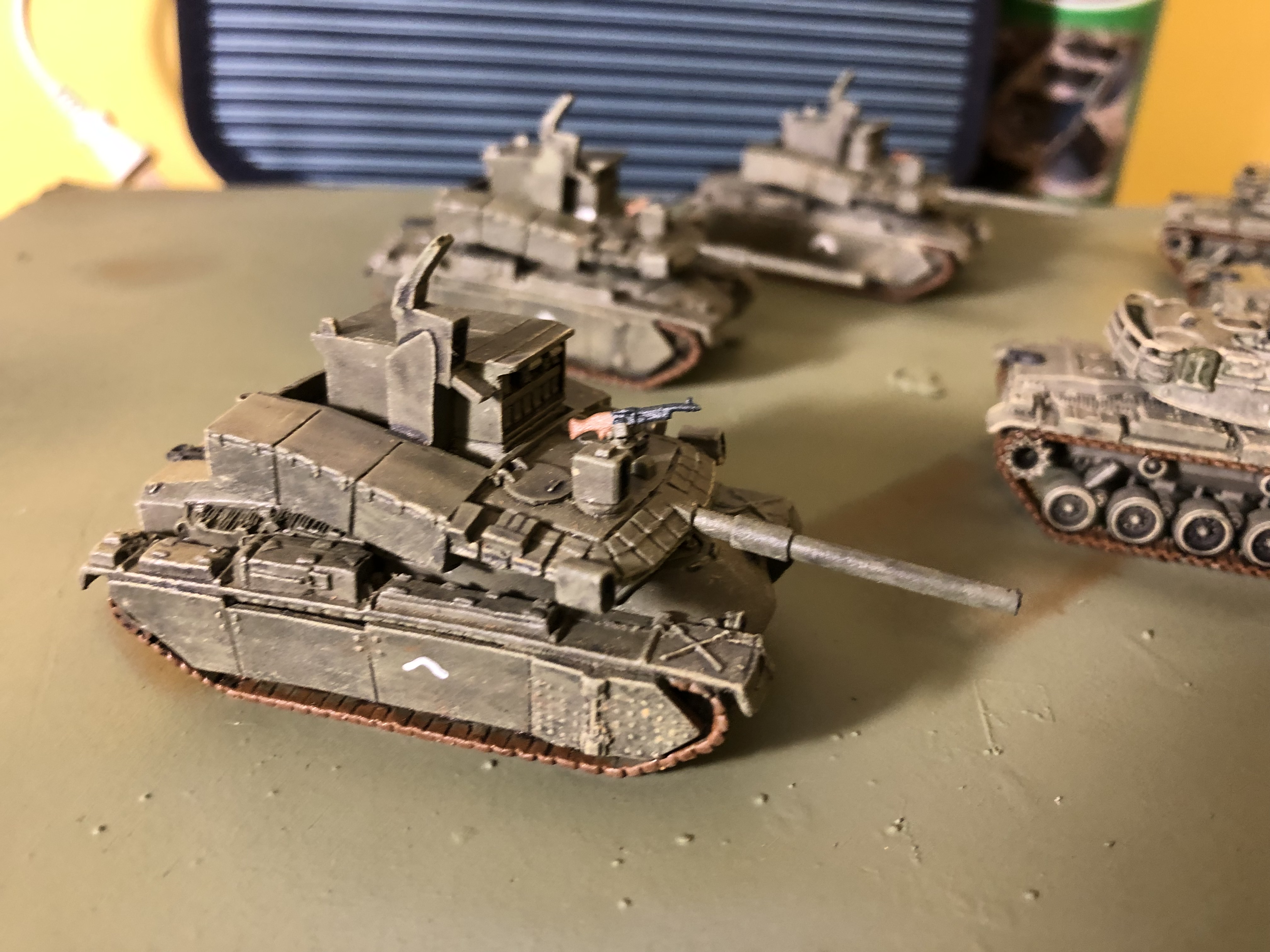
The Pereh is one neat looking sculpt, it replaces the A7V as my favorite model from Battlefront. These were so easy to build and paint and even I can make them look good enough in a short period of time.

If you plan to play IDF, these two platoons are a no-brainer for you. However, what if you only plan to play NATO, why would you want to add these two units? Simple, to get the Pereh on the table.
These two boxes will cost a measly 25-points. So using what I have in my inventory already – since my M109’s and spotter are neutrally painted as are my Soviet Shilka’s, which I can use as IDF – I think I have a force I would like to try. It takes the missile spam of the British supporting a small IDF force. Once the artillery rules go to V4 standard this may be a deadly force.

Eight tanks, great infantry, loads of missiles and all the support I need to play with. So by picking up just these two boxes, you can really add some cool capabilities to a force you want to play with.
You may wonder why I like the Pereh so much?
According to the NLOS rule you can see how much this unit differs from any other unit in the game.
These units can fire three missile shots every turn at a target as long as you remain stationary. These will become a target of enemy air from turn one, so you may want to position these guys deep inside your AAA and SAM ring since they will be a huge priority target for enemy air.
This can help you whittle down enemy air since they won’t be targeting anything else. If you are running air with this list, which has to be Israeli, you can use the Pereh to knock out enemy air defenses to make your air safer to prosecute enemy targets. Before you go overboard, remember you can only get one platoon per list since its a single support choice for the IDF.
I hope this article showed how both how easy these platoons are to build and paint and why you need to work them into a force you plan to play with. Stay tuned to NDNG as I build and discuss all other models the IDF has in Oil War.

Thank you, great article and awesome build.
awesome!
That was a good article, something to think about. Thanks for the painting guide as well!!